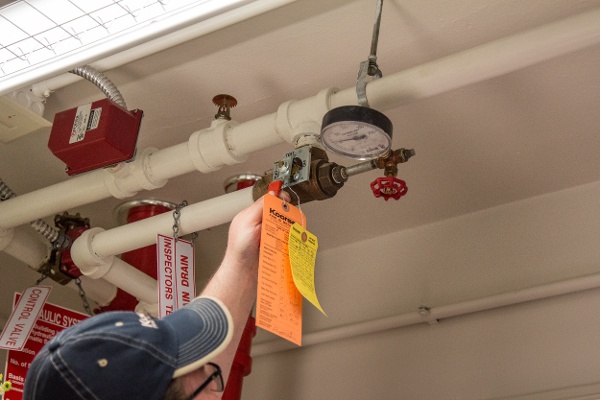
While you are most certainly aware of the fire sprinkler systems that protect you in nearly every building you enter, did you know there are actually four main types of fire sprinkler systems? The two most commonly used systems are the wet pipe fire sprinkler and the dry sprinkler systems.
While some are familiar with the terms, few actually understand their differences. But understanding what sets these two systems apart is important for knowing which system is best for your building.
Wet Fire Sprinklers
Wet fire sprinkler systems are by far the most common, the simplest, and the most affordable systems to install.
- How They Work
A wet fire sprinkler system means that, at all times, the overhead fire sprinkler piping is filled with pressurized water. When a fire occurs and the heat activates the sprinklers, water immediately sprays from the activated fire sprinkler heads.
- Pros & Cons
There are numerous benefits to a wet pipe system. Their mechanisms are quite simple, meaning installation and maintenance is easy and affordable, and the system is more reliable. Furthermore, since the pressurized water is always filling the pipes, the water is there instantaneously when it’s needed.
The downside, however, is that it cannot be used in any structures where the temperatures will drop to 40° F or below due to freezing risks. An additional risk is that should the pipes develop a leak, there could be extensive property damage.
Dry Fire Sprinklers
A dry fire sprinkler system might not be what you think. It does not use dry chemicals to suppress a fire.
Rather, a dry fire sprinkler system keeps pressurized air and/or nitrogen in the non-heated portions of the sprinkler pipes. This way, if and when temperatures drop below freezing, the pipes are not in danger of freezing.
- How They Work
The way dry pipes work is the pressurized air or nitrogen holds a valve closed that separates the main piping from the water supply. In the event of a fire, when the heat activates the sprinkler head, the air pressure drops. Once it drops, the dry-pipe valve opens up and releases the water, which can then flow to the activated sprinkler head.
- Pros & Cons
The benefits of a dry pipe system are that they are ideal for use in structures where temperatures will reach freezing (such as parking garages, loading docks, walk-in refrigerators, etc).
However, because they require a constant, reliable air supply and special components, the system is significantly more complex to install and maintain, is costlier, and has far more design restrictions.
Furthermore, they will have up to a 60 second delay from when the sprinklers are initially activated to when the water reaches the sprinkler heads and begins suppressing the fire.
Which Should My Building Have?
To a certain degree, it may be rather obvious now which system your building needs.
However, if you have any doubt, or if you have a mixed environment, don’t hesitate to give Koorsen a call to come inspect and make recommendations. With over 70 years in the fire protection industry, they can ensure your building and occupants have the best protection.


